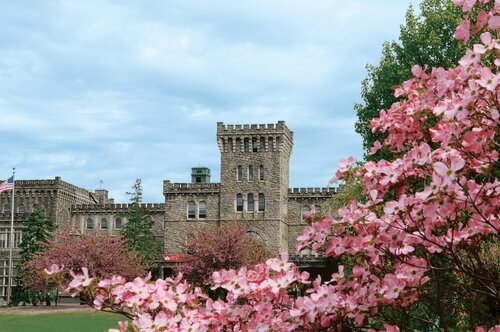Best school admission counseling help with Manhattanville’s Jose Flores? Vision-driven professional with career-long record of higher education admissions, enrollment strategy development, and consulting success for leading universities. Dedicated professional with 28+ years of experience. A self-starter with a history of dynamic recruitment success and multifaceted credentials, operating at the nexus of solid, tactical leadership and higher education expertise with a strong operations and student-focused background, an ability to work collaboratively, and a commitment to achieving goals. Read extra information on Jose Flores.

Change is the name of the game. Recruitment territories have to change, and budgets will need to be reallocated to support these new students; all a significant pendulum swing for a traditional group that does not take kindly to change. Although colleges and universities see the opportunities in front of them, many still go the traditional route. They are going from high school to high school, from community colleges to community colleges, and traveling abroad. Today, this conventional approach will not work. The isolation that was created by the pandemic forced both students and recruiters and university support staff to embrace technology. Going back to traditional ways won’t work. Allocating traditional budgets won’t work. Flexibility and a real plan that considers all this is the solution. Remember, for many of these students and families, paying for higher education will be one of the most expensive purchases they will ever make, so let’s treat them like important customers.
Manhattanville’s Jose Flores talking about student systems: In my career I have chaired retention committees that encompassed other members of the campus community. The efforts of these committees led to increases in student retention. Through the use of early alert systems students who were at risk of leaving the institution found comfort in the outreach by members of the committee. A good retention strategy has a strong team behind it. It’s a community effort. Admission’s needs to recruit students that will progress through academic programs and campus life while a community needs to support these students throughout their journey. I also found that the use of predictive modeling was helpful in student retention. Today, technology has found innovative ways of keeping students and parents aware of the key elements needed to persist through an education.
Many traditional colleges are missing key components for non-traditional students and are not fulfilling specific market demands. Recently, I analyzed IPEDs enrollment data for full-time undergraduate students enrolled in the state of New York. This data analysis suggested that there were 764,826 students enrolled in the colleges and universities in New York for fall 2018. The for-profit institutions owned a 5% market share that represented 37,949 students. That meant that these are 37,949 students that chose a non-traditional education path that more aligned to their current academic and career needs instead of choosing a traditional college or university. I dug deeper into this idea and selected two schools (1 for-profit and 1 not-for-profit) that were in the same geographical location, only a few miles apart, in New York State. I chose a major that was being offered in both schools – business. The results were astonishing. If the traditional institution offered business programs in the same way the non-traditional institution did and it was able to attract the students to attend the institution with a smarter strategy, then it would essentially double its total enrollment nearly overnight. There is room to develop academic programming that is useful and attainable to a non-traditional population.
Manhattanville’s Jose Flores talking about college financial aid: For example, Yale University, which awarded an average of $56,630 to international undergraduates who received aid in 2013-2014, accepted only 6.9 percent of applicants in 2013. Amherst College, which awarded international students $55,121 on average, had an acceptance rate of 14.3 percent. Below are the 10 colleges and universities that offered the most financial aid to international students during the 2013-2014 school year. U.S. News only considered schools that awarded financial aid to 50 international students or more. Unranked colleges, which did not submit enough data for U.S. News to calculate a ranking, were not considered for this report.
In charting my rise from an early Admissions Counselor to my current role as Chief Operating Officer with a higher education technology and enrollment consulting company my experience is substantive and multifaceted. Throughout my career, I have accumulated knowledge and expertise in admissions, financial aid, student registration, retention, marketing, and the technologies that support these areas. As a former Vice President of Enrollment and as a Consultant I’ve managed and built small to large teams. Discover more details at https://www.nysacac.org/past-presidents.